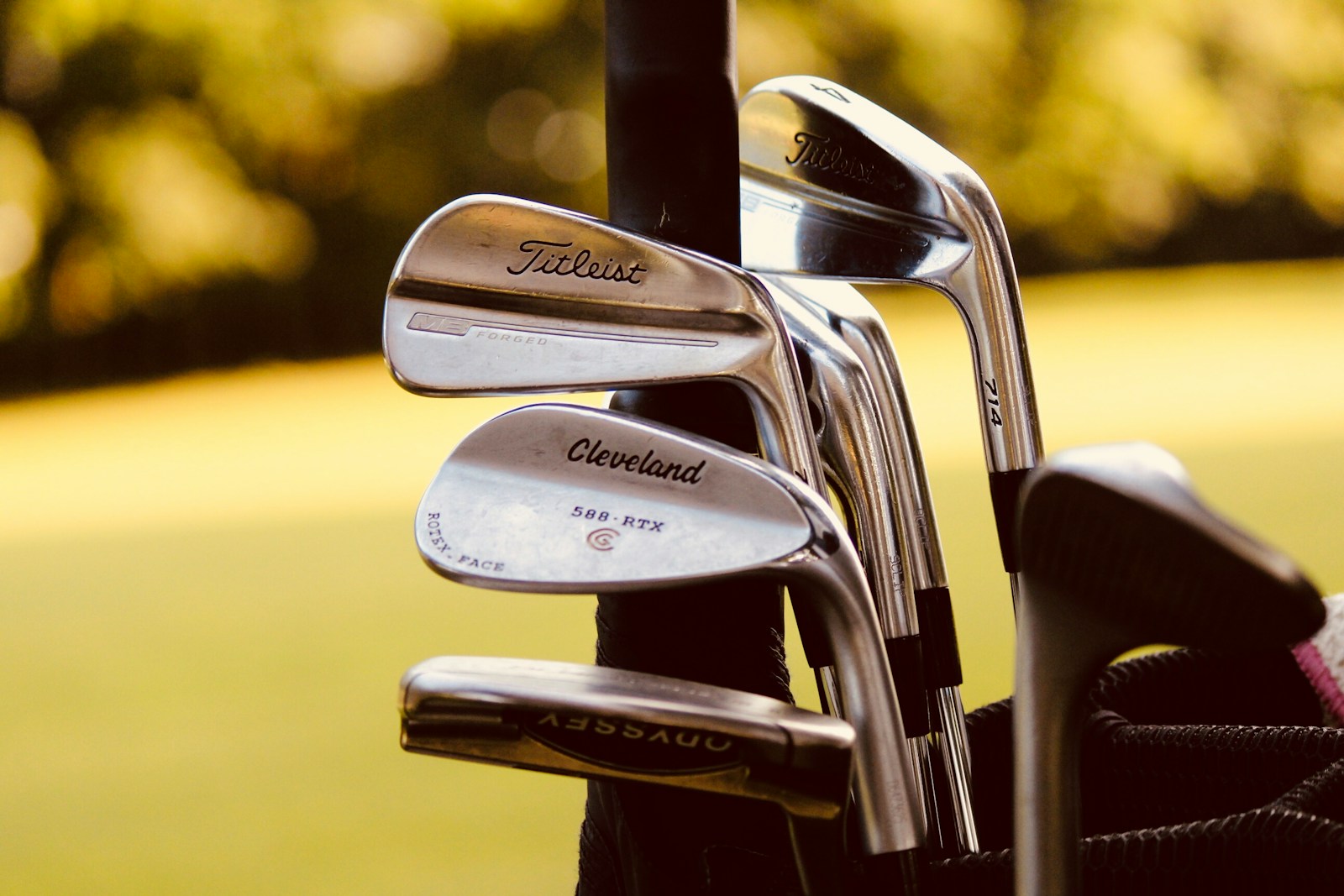Choosing the right club can be the difference between making par and hacking your way to a double bogey. Whether you’re a weekend warrior or aiming for club championships, understanding how to choose the right golf club for every shot is absolutely essential.
Let’s tee it up and dive into how you can make smarter club choices to shave strokes off your scorecard.
Why Club Selection is Critical to Your Golf Game
The Difference Between a Good Shot and a Great One
Ever hit a perfect swing only to see the ball come up 20 yards short? It wasn’t your swing—it was your club choice.
Understanding Risk vs Reward on the Course
Sometimes it’s smarter to lay up short of trouble with a hybrid rather than attack with a long iron. Smarter club choices often beat aggressive ones.
Managing Course Conditions with the Right Club
Firm fairways, soft greens, high winds—all these demand flexible thinking and good club selection.
Factors That Influence Club Choice
Distance to the Target
This is the most obvious factor. Know how far you typically hit each club, not just how far you once hit it “that one time.”
Wind and Weather Conditions
A strong headwind could turn your 7-iron into a 5-iron shot. Always factor the breeze.
Elevation Changes
Hitting uphill? Take more club. Hitting downhill? Take less. Simple math, big results.
Lie of the Ball
Sitting pretty on a fairway? Go for it. Buried in rough? You’ll need more loft to dig it out.
Hazards and Course Layout
Water, bunkers, OB stakes—sometimes it’s better to club down and aim safe.
Confidence and Personal Preference
If you love your 6-iron but fear your 5, trust your gut. Confidence matters more than textbook advice.
How to Choose the Right Club for Specific Situations
1. Tee Shots
Driver, 3-Wood, or Hybrid?
Driver for max distance. 3-wood for control. Hybrid if you just need a ball in the fairway.
When to Play It Safe with a Club Other Than Driver
Tight fairways or doglegs often call for leaving the driver in the bag.
2. Fairway Shots
Picking the Right Fairway Wood or Long Iron
Fairway woods (like a 3 or 5-wood) give great distance but can be tricky off tight lies. Hybrids and long irons offer control.
Understanding Risk on Par 5s
If you can’t reach comfortably, lay up with a reliable mid-iron instead of trying to “hero it” over water.
3. Approach Shots
Mid and Short Irons Selection
Choose an iron that gives you a full, confident swing—not a forced one.
Factoring in Wind and Pin Position
Tucked pins might mean aiming for the fat part of the green with one extra club.
4. Shots from the Rough
Choosing Clubs with More Loft
Forget the 3-wood from thick stuff. Grab a 7-iron or hybrid and focus on getting back in play.
Adjusting Expectations for Distance
Accept you’ll lose distance—and plan accordingly.
5. Bunker Shots
Greenside vs Fairway Bunkers
Greenside? Grab a sand wedge with 54-58 degrees of loft. Fairway bunkers? Use a club with less loft and avoid digging too deep.
Sand Wedges, Lob Wedges, and the Right Bounce
More bounce helps in soft sand; less bounce in firm or compacted bunkers.
6. Chipping Around the Green
When to Use a Wedge vs a Putter
Tight lies? Putt it. Fluffy rough? Chip with a sand or gap wedge.
Playing Low-Running Chips
If you can get the ball rolling quickly with a pitching wedge or 9-iron, do it. It’s safer than lofting it high.
7. Pitch Shots
Lob Wedge or Sand Wedge?
Use the lob wedge (58°-60°) for high, soft shots. Sand wedge (54°-56°) for a little more run out.
How Trajectory Affects Club Choice
Higher shots stop faster but risk more mishits. Lower shots are more reliable under pressure.
8. Putting
Types of Putters
Blade putters suit players with arc strokes; mallets suit straight-back, straight-through strokes.
Matching Putter Style to Stroke Type
Pick the one that feels natural and builds confidence—no matter what’s trending.
Special Situations that Impact Club Selection
Playing in Windy Conditions
Swing smoother, club up, and keep the ball flight lower.
Wet and Soft Course Conditions
Expect less roll-out. Hit extra club and aim for safer landing zones.
Hard and Fast Greens
Land shots softer and shorter to allow for more bounce and rollout.
The Importance of Knowing Your Distances
Tracking Your Average Club Distances
Use range sessions or apps to chart your real distances—not your “wishful thinking” ones.
How a Rangefinder or GPS Can Help
Laser rangefinders and GPS units give accurate yardages to flags, hazards, and edges.
Building Confidence in Your Club Selection
Practice Under Different Conditions
Play practice rounds in windy, wet, or cold weather to understand how your clubs react.
Commit to the Club You Choose
Second-guessing kills swings. Pick your club, commit 100%, and fire away.
Conclusion
Smart club selection is one of the hidden skills that separates good golfers from great ones. It’s not always about hitting the perfect shot—it’s about choosing the right tool for the job. The more you learn your clubs, know your distances, and trust your instincts, the lower your scores will go. Now get out there, make confident choices, and own every shot you take!
FAQs
1. Should I always use a driver off the tee?
Not necessarily. If accuracy is more important than distance, a 3-wood or hybrid might be the smarter play.
2. How can I know my real distances for each club?
Track shots during range sessions and on the course using a GPS device or shot-tracking app.
3. Is it better to club up or down when in doubt?
Club up and swing smooth. It’s safer than forcing a smaller club to go farther.
4. How many wedges should I carry in my bag?
Most players carry three: pitching wedge, sand wedge, and lob wedge. Some add a gap wedge too.
5. What’s the biggest mistake golfers make in club selection?
Letting ego choose the club instead of reality. Play smart, not macho.









